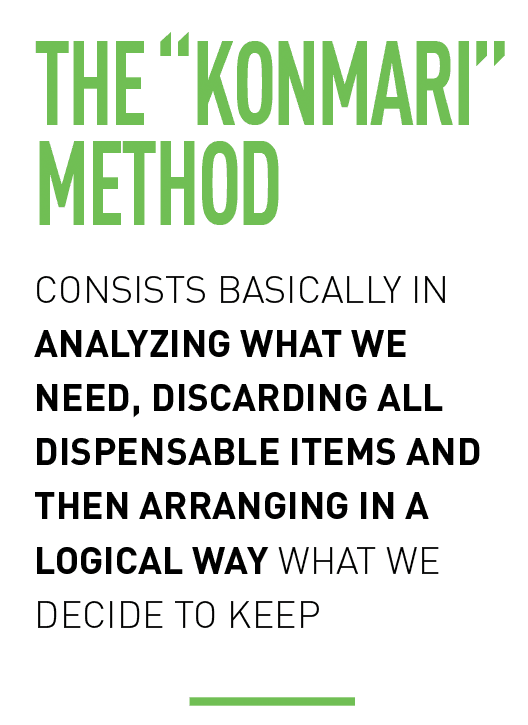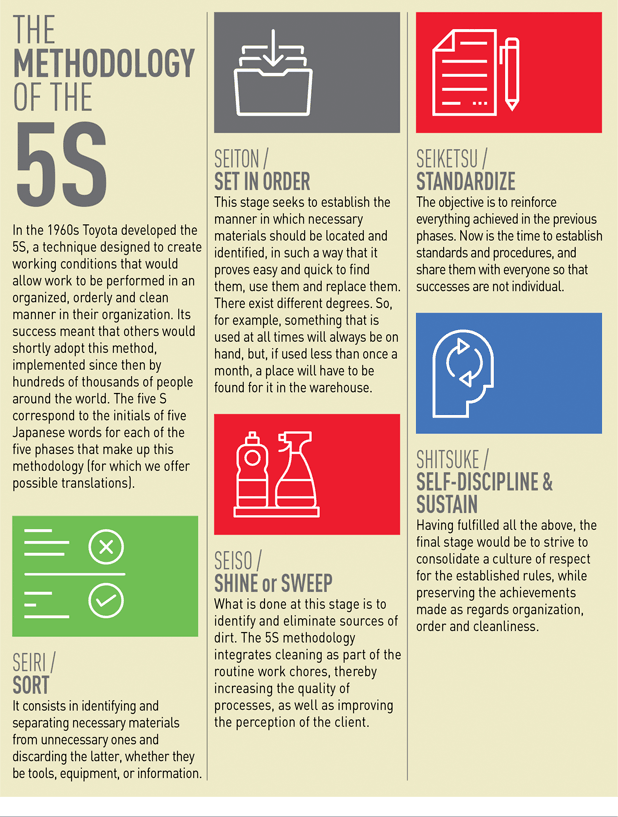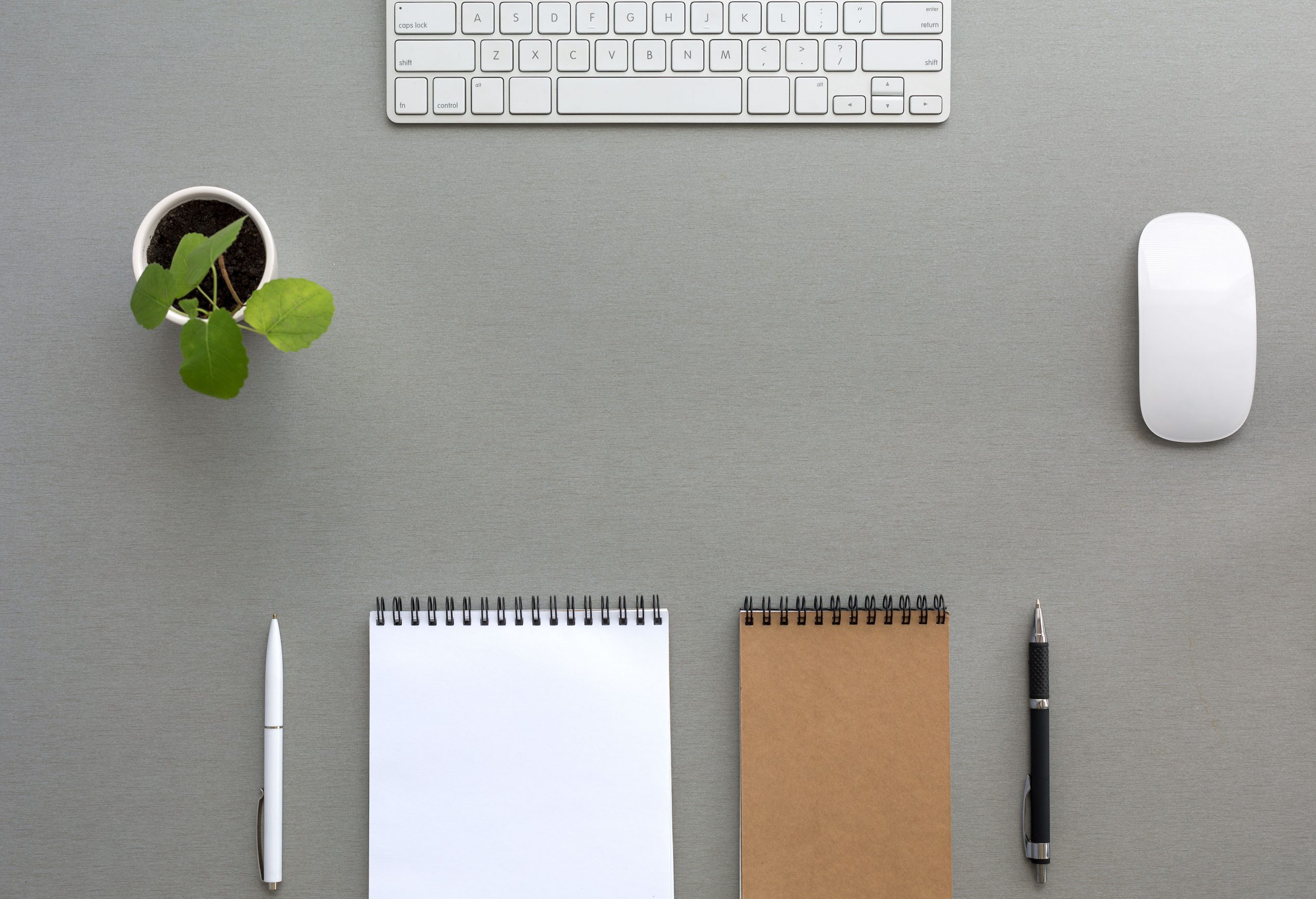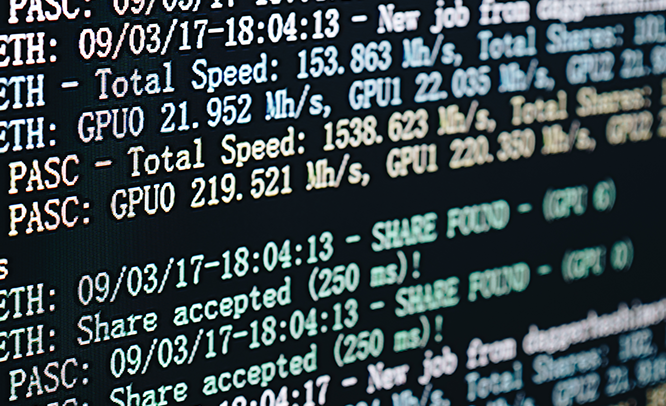One of the decisive factors when it comes to improving productivity is taking care of the work space. The experts all agree that the physical environment contributes in one way or another to employee satisfaction. Together with the new designs proposed by organizations, which clearly opt for open-plan workplaces, each one of us can supplement this formula for well-being and performance, taking charge of the orderliness around us.
TEXT JAVIER ORTEGA | PHOTOGRAPH THINKSTOCK
Our work routine and haste make us prone to overlook certain details in our place of work. Papers piling up, office material scattered around, a collection of empty water bottles… The main excuse to justify this malpractice is often a lack of time: the daily routine overwhelms us. But it is precisely this generic response that proves to be a trap in itself, since it has been proven that a tidy work space results in better time management, as well as enhancing our concentration and productivity.
A first step on the road to orderliness may be to take a look at our desk and analyze how many of the elements we see there are put to use on a daily basis. Having a block of sticky notes, a pen or the calendar next to the phone may be practical but, does it make sense to accumulate folders with documentation on projects we are not going to look at that day? Before reaching this situation, it is worth asking another question: what things do I need to print out and what can I consult on the screen?
Some studies suggest that we spend 90 percent of our time each day indoors (mainly in the home and the office). That is why it is important to achieve environments where we feel comfortable. Marie Kondo, author, entrepreneur and organizing consultant, was included by Time magazine among the 100 most influential people in the world. She advocates the “KonMari” method which essentially consists in analyzing what we need, discarding all dispensable items and then arranging in a logical way what we decide to keep. It seems simple, but, in practice, being fond of useless things or afraid of throwing something away in case we may need it in the future (although 80 percent of the time this does not happen) makes us succumb to hoarding, turning our desk into a real mess.

BENEFITS OF TIDINESS
If we manage to pass the test and only hang on to what is truly essential (or almost), the next step is to apply some tidiness techniques so as to arrange those items we will actually be using in the most logical fashion. For example, where we place our desktop or tower computer determines whether we win or lose useful space on our desk.
There are elements (such as the phone) which, almost certainly, we will need to keep close by, but other items (such as a stapler) can be placed further away out of sight, for example in a drawer. The way we run our cables can also result in the appearance of our workstation being more or less chaotic. If it is possible to fasten them with cable ties or conceal them, this will always be positive. To manage our documents, Kondo proposes three categories that can help decide where we place them: those currently in use; those required for a limited period; and those to be stored indefinitely. In this latter case, a suitable storage space will have to be sought.
Enjoying a clean environment will not only allow us to find what we need at once, but will also have an effect on our well-being. The principal psychological benefits the experts attribute to an orderly workspace include: lower levels of anxiety; greater attention span, making better use of time; enhanced effectiveness; greater sense of control…
Starting back after the vacations is a good time to set ourselves small goals. Keeping a tidy desk, as well as being of personal benefit, can also help your colleagues. Do you accept the challenge?





